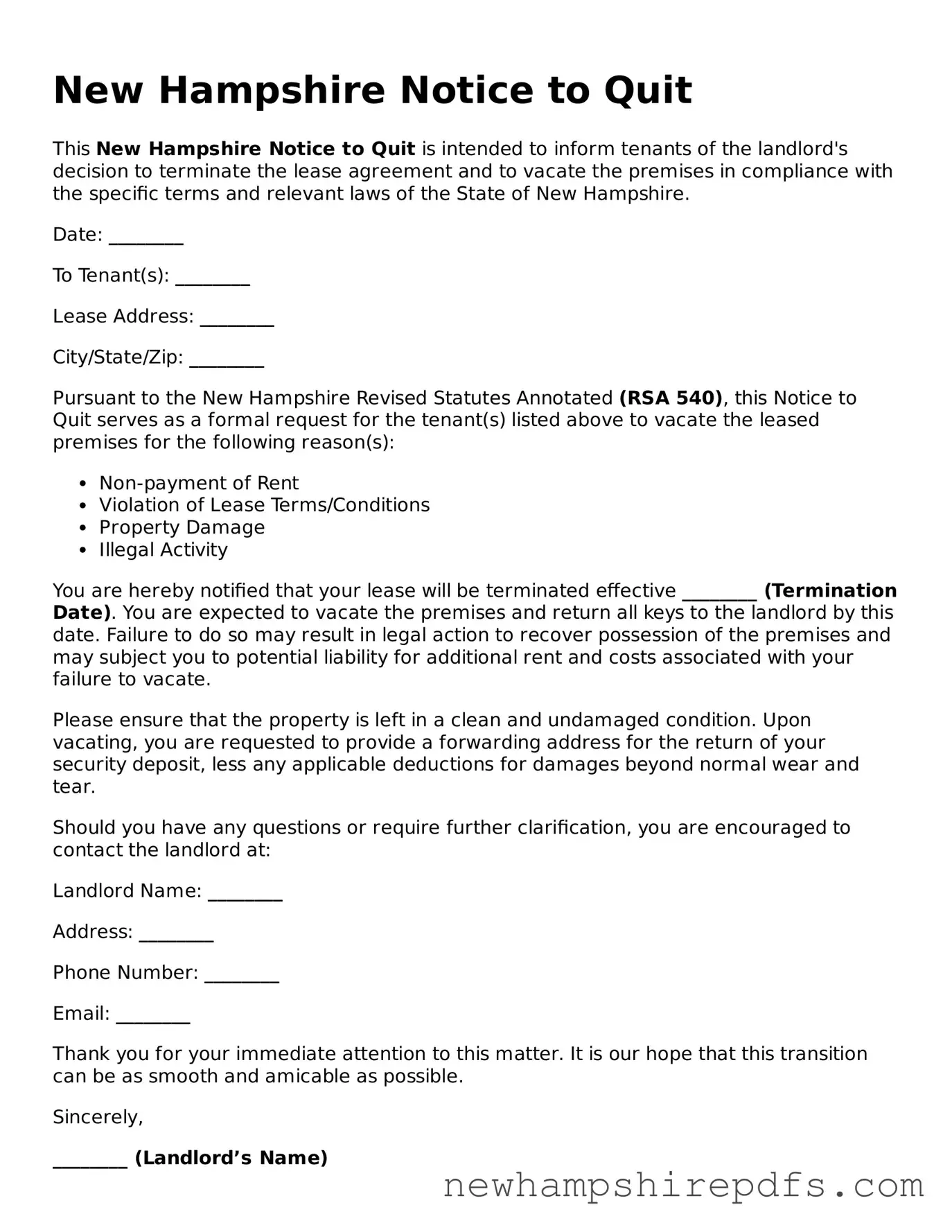New Hampshire Notice to Quit
This New Hampshire Notice to Quit is intended to inform tenants of the landlord's decision to terminate the lease agreement and to vacate the premises in compliance with the specific terms and relevant laws of the State of New Hampshire.
Date: ________
To Tenant(s): ________
Lease Address: ________
City/State/Zip: ________
Pursuant to the New Hampshire Revised Statutes Annotated (RSA 540), this Notice to Quit serves as a formal request for the tenant(s) listed above to vacate the leased premises for the following reason(s):
- Non-payment of Rent
- Violation of Lease Terms/Conditions
- Property Damage
- Illegal Activity
You are hereby notified that your lease will be terminated effective ________ (Termination Date). You are expected to vacate the premises and return all keys to the landlord by this date. Failure to do so may result in legal action to recover possession of the premises and may subject you to potential liability for additional rent and costs associated with your failure to vacate.
Please ensure that the property is left in a clean and undamaged condition. Upon vacating, you are requested to provide a forwarding address for the return of your security deposit, less any applicable deductions for damages beyond normal wear and tear.
Should you have any questions or require further clarification, you are encouraged to contact the landlord at:
Landlord Name: ________
Address: ________
Phone Number: ________
Email: ________
Thank you for your immediate attention to this matter. It is our hope that this transition can be as smooth and amicable as possible.
Sincerely,
________ (Landlord’s Name)
________ (Landlord’s Signature)
